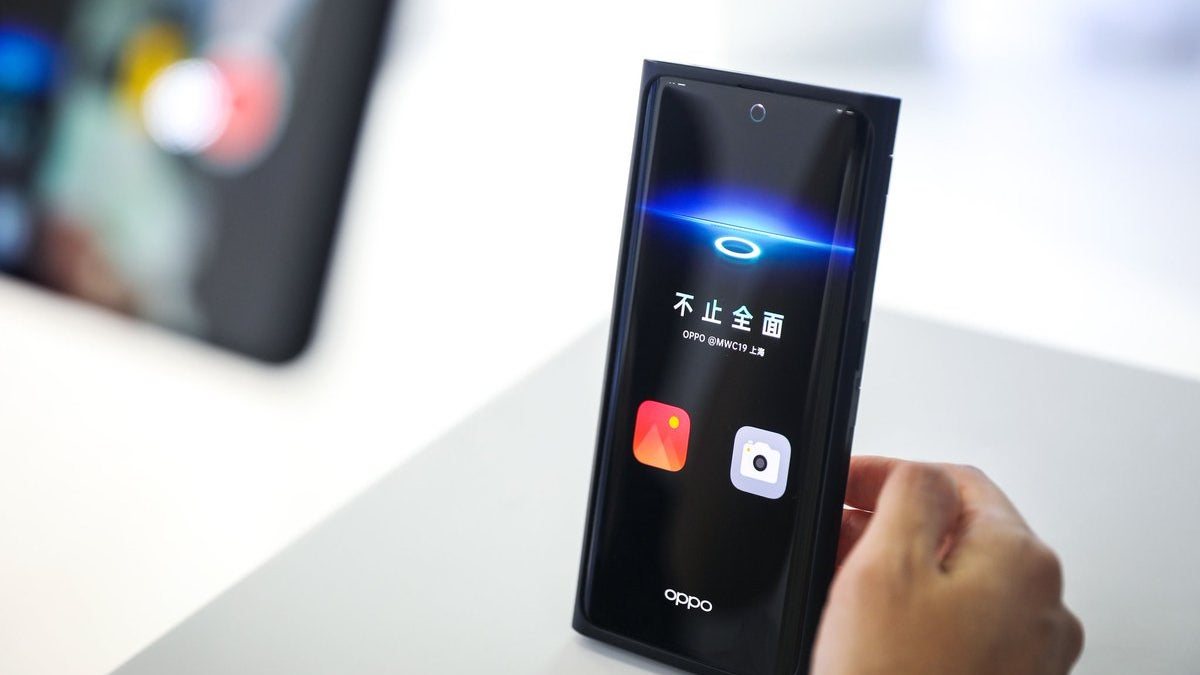Oppo shows off the world's first phone with Under-Screen Camera technology

First came the loathed notch. Then Samsung (and Huawei) started drilling actual holes into the screens of their high-end (and even mid-range) devices to move one step closer to the bezelless dream. Pop-ups and sliders are also a thing nowadays, despite the inherent vulnerabilities of mechanical camera modules, but what most smartphone manufacturers might actually be working on is invisible selfie shooters.
Invisible to the unassuming eye of the user, that is, with Oppo becoming the world's first company today to showcase a (partially) functional prototype of a phone equipped with "Under-Screen Camera technology." Oppo and Xiaomi teased this breakthrough pretty much simultaneously a few weeks back, but we're guessing the latter is one or two steps behind the former when it comes to actually developing the technology.
OPPO's brand new solution for full-screen display - Under-screen Camera (USC) has just been unveiled here at #MWC19 Shanghai! #MoreThanTheSeen pic.twitter.com/k5qEQ3QNta
— OPPO India (@oppomobileindia) June 26, 2019
Before you get too excited, though, you may want to remember handsets with under-display cameras are not expected to be commercially released this year. That's because there are a number of hurdles yet to be overcome, starting with the quality of pictures taken by these hidden shooters. Just like in-screen fingerprint readers, the display-embedded imaging sensors are simply not as accurate and capable as their conventional counterparts... yet.
But Oppo seems pretty confident this challenge will soon be conquered through the implementation of haze removal, HDR, and white balance technologies resulting in a truly bezel-less phone with a selfie camera rivaling "current smartphones in the market today." In addition to a drool worthy promotional video and a series of live prototype pictures from the 2019 Mobile World Congress in Shanghai, Oppo has tweeted a short explanation of the Under-Screen Camera (USC) technology earlier today, describing it as a combination of a customized camera module, an enhanced translucent panel material, and advanced processing algorithms aimed at taking "vivid pictures without a notch or motorized camera."
Sounds like mass manufacturing will not exactly be a breeze, which is yet another key reason why we need to wait until next year (at the earliest) to see this innovation translated into a commercial product. Fingers crossed for better quality than the early performance of under-display fingerprint scanners.
Follow us on Google News










![A new Android bug is making it impossible to install new apps. Are you affected? [UPDATE]](https://m-cdn.phonearena.com/images/article/176703-wide-two_350/A-new-Android-bug-is-making-it-impossible-to-install-new-apps.-Are-you-affected-UPDATE.webp)

Things that are NOT allowed:
To help keep our community safe and free from spam, we apply temporary limits to newly created accounts: